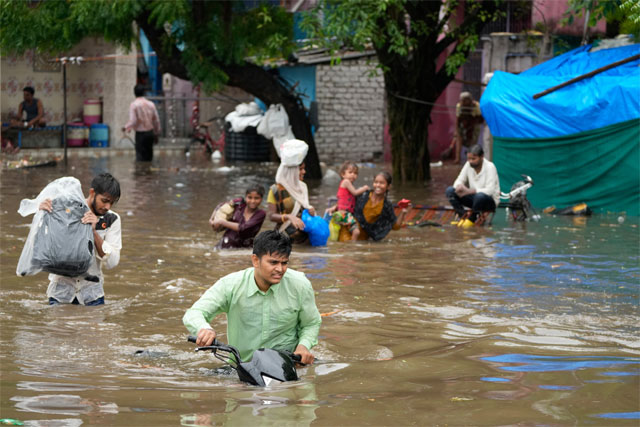Daijiworld Media Network - Gandhinagar
Gandhinagar, May 6: At least 14 people have died and 16 sustained injuries following a wave of unseasonal rain, powerful winds, and dust storms that swept across Gujarat from May 4 to 6, throwing normal life into disarray and devastating crops just ahead of the harvest season.
According to officials, Kheda district bore the brunt of the extreme weather, with four deaths — two caused by falling trees and two more in structural collapses. In Vadodara, three people died, including two by electrocution and one due to a collapsing hoarding.
Fatalities were also reported from Ahmedabad, Aravalli, and Dahod. Aravalli saw two deaths from lightning strikes, while in Dahod, victims were crushed by uprooted trees. Ahmedabad witnessed one lightning-related fatality and another from a collapsed hoarding. In Anand, a woman died after a wall caved in.

Among the injured, six cases were reported from Panchmahal, followed by three each in Kheda and Dahod, and four others in Aravalli and Anand. Livestock was not spared either — 25 animals were injured, and seven homes collapsed in Panchmahal and Kheda.
The India Meteorological Department (IMD) issued further warnings, forecasting continued rainfall and wind speeds of up to 50 km/h. Residents have been advised to stay indoors, especially in areas with unstable structures or large hoardings.
The storms affected 168 talukas, with Saurashtra, Kutch, and central Gujarat witnessing widespread damage. In Ahmedabad alone, over 75 incidents of tree falls were reported as the city was engulfed in a fierce dust storm followed by heavy rain.
The agricultural sector has taken a major hit, with extensive crop damage reported in Junagadh, Amreli, Gir Somnath, and Kutch. Mango orchards in Saurashtra suffered heavy fruit drop just before peak harvest, while standing crops such as bajra, sesame, groundnut, and pulses were flattened.
Vegetable growers in Anand and Kheda reported losses to tomatoes, chillies, and leafy greens, and waterlogging has affected soil quality in low-lying fields, according to the Agriculture Department.
Authorities continue to monitor the situation and are expected to initiate relief measures for affected families and farmers.